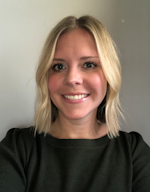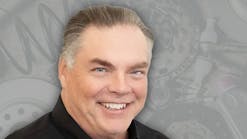David Caracci, chairman of the Global Automotive Aftermarket Symposium (GAAS), sat down with Aftermarket Business World to discuss the state of the industry and what's to come at this year's symposium.
Hosted in Chicago, Ill., at the Hyatt Regency O'Hare, GAAS kicks off May 18-19 with the theme, "Aftermarket Fast Forward: What you need to know to stay ahead." So what does Caracci think you need to know now? Here he shares his thoughts on how the Japanese earthquake and subsequent tsunami will affect the global aftermarket as a whole, some key industry issues to be discussed at GAAS and where global aftermarket opportunities lie.
How do you think the Japan disaster is going to affect the aftermarket as a whole?
Listen to Caracci's answer. Depending which source you listen to, one day the supply isn't going to be curtailed of parts and cars, and then the next day the supply of parts and cars will be curtailed. I think common sense says that with that kind of disaster, the factories that are over there — as producers of component parts and aftermarket parts — it will slow the supply down for sure. How long and how much is anybody's bet. When you are the leading brand or when you have the dominant share or thought of as the highest quality position, the worst thing that can happen to you is to run out of parts. The technician says, "I only want a Caracci alternator and that's what came on my Toyota and that's what I want and that's the only one I ever use. There are a lot of technicians that think that way. But what happens when you have a shortage of supply is that that Toyota or Nissan or Honda still comes in to be repaired and that owner still wants to drive it tomorrow morning at 9 a.m. The technician is forced to try a different brand. What is going to happen with the Japanese disaster is the US suppliers or other global suppliers that sell parts for Japanese vehicles in the United States are going to gain market share at the expense of the OEM brands or suppliers that are thought of as OEM brands.
Listen to Caracci's answer. The distributors that distribute OEM-branded parts are going to lose market share and the ones that are going to gain are the more traditional ones that carry the more domestic brands. The manufacturers that are not OEMs, so to speak, and the distributors that don't carry purely OEM brands will gain ground because of that disaster.
Listen to Caracci's answer. For those though of as the OEM supplier, this is going to be a major shot in their arm in market share. And it's not temporary, it is permanent. Some of it returns of course when the OEM supplier starts supplying again, some of the sales, even maybe a majority of the sales will go back to them. But, they've lost some of that mystique, that "If I don't put this part on, the car won't run right." So that share never goes completely back. It is just the way it is. Ironically the earthquake may be the best thing that ever happened to some of the domestic suppliers of parts for Toyotas, Nissans and Suzukis.
Moving over to GAAS, what are the key issues and concerns to be addressed at GAAS this year?
Listen to Caracci's answer. We're going to have Bill Strauss [senior economist and economic advisor in the economic research department at the Federal Reserve Bank of Chicago] on the economy. That is going to be pretty interesting because we're in a rebound, and Bill is usually pretty accurate on his predictions and assessments. So it will be interesting to hear where he thinks this rebound is going to take us and how that will fits with the companies in the audience. This year we've gone to the South American market. You hear about emerging markets and global markets, and everyone always thinks Far East. But there's a lot happening in South America. A lot of American companies have either made joint ventures or purchased companies in South America in the last 5 years. It is going to be an interesting place to watch as it becomes stronger and stronger, and that's a place that American parts manufacturers and distributors haven't necessarily gone. We are going to have speakers and panelists on that subject that live there or have lived there and do business there or run divisions that do business there.
Our seminar is going to be finished off by David Cole, chairman emeritus of the Center of Automotive Research. David is pretty deep into what is going on in the car business. I'm curious to see what he talks about as his title is "What's driving Detroit."
In your teaching at Northwood University, how are you trying to change perspectives about the modern aftermarket?
Listen to Caracci's answer. I instruct online courses for Northwood University's undergrad program. One course I teach is current issues in the global aftermarket. What happens when students come into that course — almost all of them work in our industry — is there is this giant pushback of "don't think about the global, bring the jobs back to the US. What can we do to make more things [in the US], we need to get more business in the US. That changes over the course of those 8 weeks. That kind of goes right back to David Cole's presentation. It's not "What's driving Detroit." The bottom line for the aftermarket is it's not Detroit. It's the world. Since the fall of Berlin Wall and the Internet became so strong, both of those together opened the world up. I think the one thing that is an opportunity for companies is to stop thinking of the United States as a single entity and start thinking about their company as an auto parts producer or an auto parts distributor in the global aftermarket.
GAAS always focused on how to recruit new and young people to the industry. Any new focuses for 2011?
Listen to Caracci's answer. I was recently at the Leadership 2.0 class in West Palm Beach for the University of the Aftermarket that Brian Cruickshank [director, University of the Aftermarket] puts on. I don't have an exact percent, but of about 30 people in room, there were about 5 ladies. Now if you think about our population base and the percentage of women versus men, and if you think about the percentage of women with college degrees versus men, that's an interesting percentage of people in that class. It was very low in my opinion. Manufacturers and distributors are missing a big opportunity for potential associates. So this year we've got David Portalatin [industry analyst, The NPD Group's Automotive division], and he is doing a special research project about women in the aftermarket, both as employees and potential customers. And following David will be Donna Wagner [marketing communications manager with Wells Manufacturing and instructor at Northwood Univeristy] and she's got a panel of three ladies — all executives in the aftermarket — some for big retailers, some for big manufacturers, and the four women are going to have a panel discussion on utilizing women in the aftermarket. Look at this giant workforce. Potential leaders are there, and if you look at the percentages, the aftermarket still is not tapping this resource.
There is a new racing panel this year. What will they be bringing to the GAAS audience?
Listen to Caracci's answer. This time we've got [Paul] "Scooter" Brothers, chairman-elect of SEMA, he's one of the owners of Comp Performance Group. And Scooter Brothers is going to bring in three race team owners — all professional teams — from different parts of the sport. He's got a panel of 3 professional racers, one from each part of racing world. And they are going to talk about the business side of racing. What I'm hoping they talk about is how the manufacturers and distributors can capitalize better on race programs and sponsorships. Is there a way to make people buy more parts, buy more expensive parts or buy more profitable parts? Racing is colorful and it is really fun and sexy, but from the racer team owners' mouths, how do the people in our audience gain from that?
David Caracci, chairman of the Global Automotive Aftermarket Symposium (GAAS), sat down with Aftermarket Business World to discuss the state of the industry and what's to come at this year's symposium.
Hosted in Chicago, Ill., at the Hyatt Regency O'Hare, GAAS kicks off May 18-19 with the theme, "Aftermarket Fast Forward: What you need to know to stay ahead." So what does Caracci think you need to know now? Here he shares his thoughts on how the Japanese earthquake and subsequent tsunami will affect the global aftermarket as a whole, some key industry issues to be discussed at GAAS and where global aftermarket opportunities lie.
How do you think the Japan disaster is going to affect the aftermarket as a whole?
Listen to Caracci's answer. Depending which source you listen to, one day the supply isn't going to be curtailed of parts and cars, and then the next day the supply of parts and cars will be curtailed. I think common sense says that with that kind of disaster, the factories that are over there — as producers of component parts and aftermarket parts — it will slow the supply down for sure. How long and how much is anybody's bet. When you are the leading brand or when you have the dominant share or thought of as the highest quality position, the worst thing that can happen to you is to run out of parts. The technician says, "I only want a Caracci alternator and that's what came on my Toyota and that's what I want and that's the only one I ever use. There are a lot of technicians that think that way. But what happens when you have a shortage of supply is that that Toyota or Nissan or Honda still comes in to be repaired and that owner still wants to drive it tomorrow morning at 9 a.m. The technician is forced to try a different brand. What is going to happen with the Japanese disaster is the US suppliers or other global suppliers that sell parts for Japanese vehicles in the United States are going to gain market share at the expense of the OEM brands or suppliers that are thought of as OEM brands.
Listen to Caracci's answer. The distributors that distribute OEM-branded parts are going to lose market share and the ones that are going to gain are the more traditional ones that carry the more domestic brands. The manufacturers that are not OEMs, so to speak, and the distributors that don't carry purely OEM brands will gain ground because of that disaster.
Listen to Caracci's answer. For those though of as the OEM supplier, this is going to be a major shot in their arm in market share. And it's not temporary, it is permanent. Some of it returns of course when the OEM supplier starts supplying again, some of the sales, even maybe a majority of the sales will go back to them. But, they've lost some of that mystique, that "If I don't put this part on, the car won't run right." So that share never goes completely back. It is just the way it is. Ironically the earthquake may be the best thing that ever happened to some of the domestic suppliers of parts for Toyotas, Nissans and Suzukis.
{C}Moving over to GAAS, what are the key issues and concerns to be addressed at GAAS this year?
Listen to Caracci's answer. We're going to have Bill Strauss [senior economist and economic advisor in the economic research department at the Federal Reserve Bank of Chicago] on the economy. That is going to be pretty interesting because we're in a rebound, and Bill is usually pretty accurate on his predictions and assessments. So it will be interesting to hear where he thinks this rebound is going to take us and how that will fits with the companies in the audience. This year we've gone to the South American market. You hear about emerging markets and global markets, and everyone always thinks Far East. But there's a lot happening in South America. A lot of American companies have either made joint ventures or purchased companies in South America in the last 5 years. It is going to be an interesting place to watch as it becomes stronger and stronger, and that's a place that American parts manufacturers and distributors haven't necessarily gone. We are going to have speakers and panelists on that subject that live there or have lived there and do business there or run divisions that do business there.
Our seminar is going to be finished off by David Cole, chairman emeritus of the Center of Automotive Research. David is pretty deep into what is going on in the car business. I'm curious to see what he talks about as his title is "What's driving Detroit."
In your teaching at Northwood University, how are you trying to change perspectives about the modern aftermarket?
Listen to Caracci's answer. I instruct online courses for Northwood University's undergrad program. One course I teach is current issues in the global aftermarket. What happens when students come into that course — almost all of them work in our industry — is there is this giant pushback of "don't think about the global, bring the jobs back to the US. What can we do to make more things [in the US], we need to get more business in the US. That changes over the course of those 8 weeks. That kind of goes right back to David Cole's presentation. It's not "What's driving Detroit." The bottom line for the aftermarket is it's not Detroit. It's the world. Since the fall of Berlin Wall and the Internet became so strong, both of those together opened the world up. I think the one thing that is an opportunity for companies is to stop thinking of the United States as a single entity and start thinking about their company as an auto parts producer or an auto parts distributor in the global aftermarket.
GAAS always focused on how to recruit new and young people to the industry. Any new focuses for 2011?
Listen to Caracci's answer. I was recently at the Leadership 2.0 class in West Palm Beach for the University of the Aftermarket that Brian Cruickshank [director, University of the Aftermarket] puts on. I don't have an exact percent, but of about 30 people in room, there were about 5 ladies. Now if you think about our population base and the percentage of women versus men, and if you think about the percentage of women with college degrees versus men, that's an interesting percentage of people in that class. It was very low in my opinion. Manufacturers and distributors are missing a big opportunity for potential associates. So this year we've got David Portalatin [industry analyst, The NPD Group's Automotive division], and he is doing a special research project about women in the aftermarket, both as employees and potential customers. And following David will be Donna Wagner [marketing communications manager with Wells Manufacturing and instructor at Northwood Univeristy] and she's got a panel of three ladies — all executives in the aftermarket — some for big retailers, some for big manufacturers, and the four women are going to have a panel discussion on utilizing women in the aftermarket. Look at this giant workforce. Potential leaders are there, and if you look at the percentages, the aftermarket still is not tapping this resource.
There is a new racing panel this year. What will they be bringing to the GAAS audience?
Listen to Caracci's answer. This time we've got [Paul] "Scooter" Brothers, chairman-elect of SEMA, he's one of the owners of Comp Performance Group. And Scooter Brothers is going to bring in three race team owners — all professional teams — from different parts of the sport. He's got a panel of 3 professional racers, one from each part of racing world. And they are going to talk about the business side of racing. What I'm hoping they talk about is how the manufacturers and distributors can capitalize better on race programs and sponsorships. Is there a way to make people buy more parts, buy more expensive parts or buy more profitable parts? Racing is colorful and it is really fun and sexy, but from the racer team owners' mouths, how do the people in our audience gain from that?



